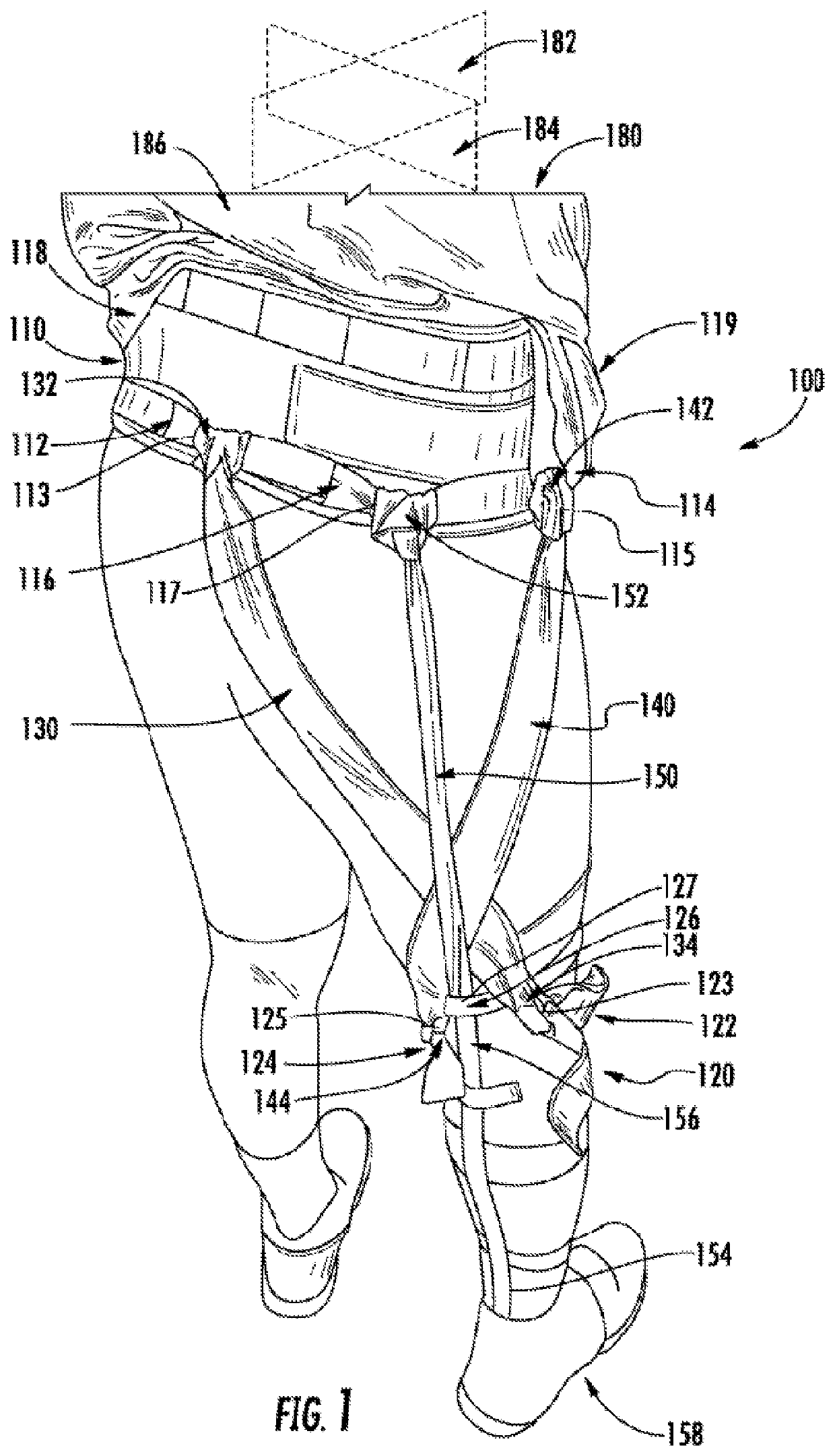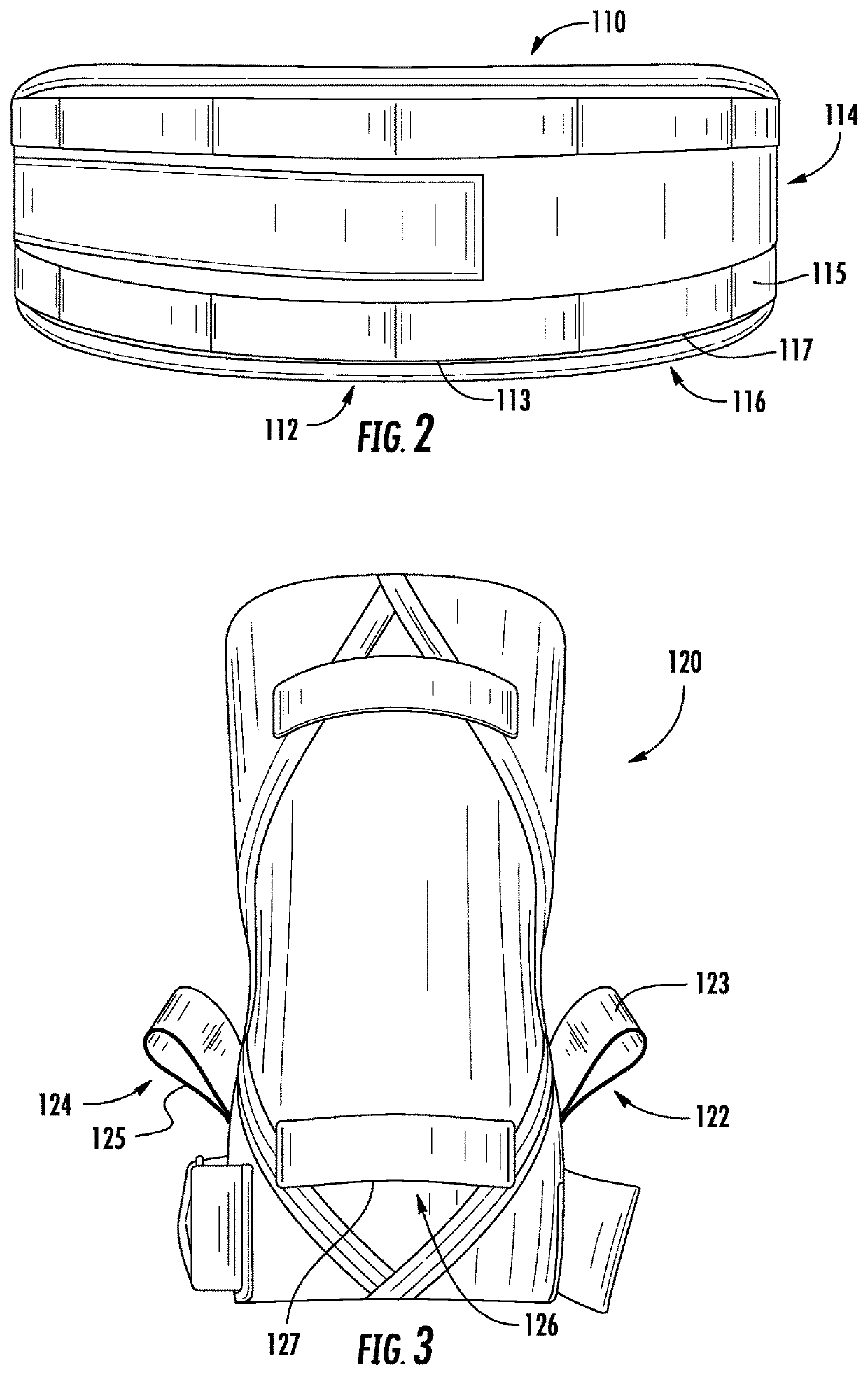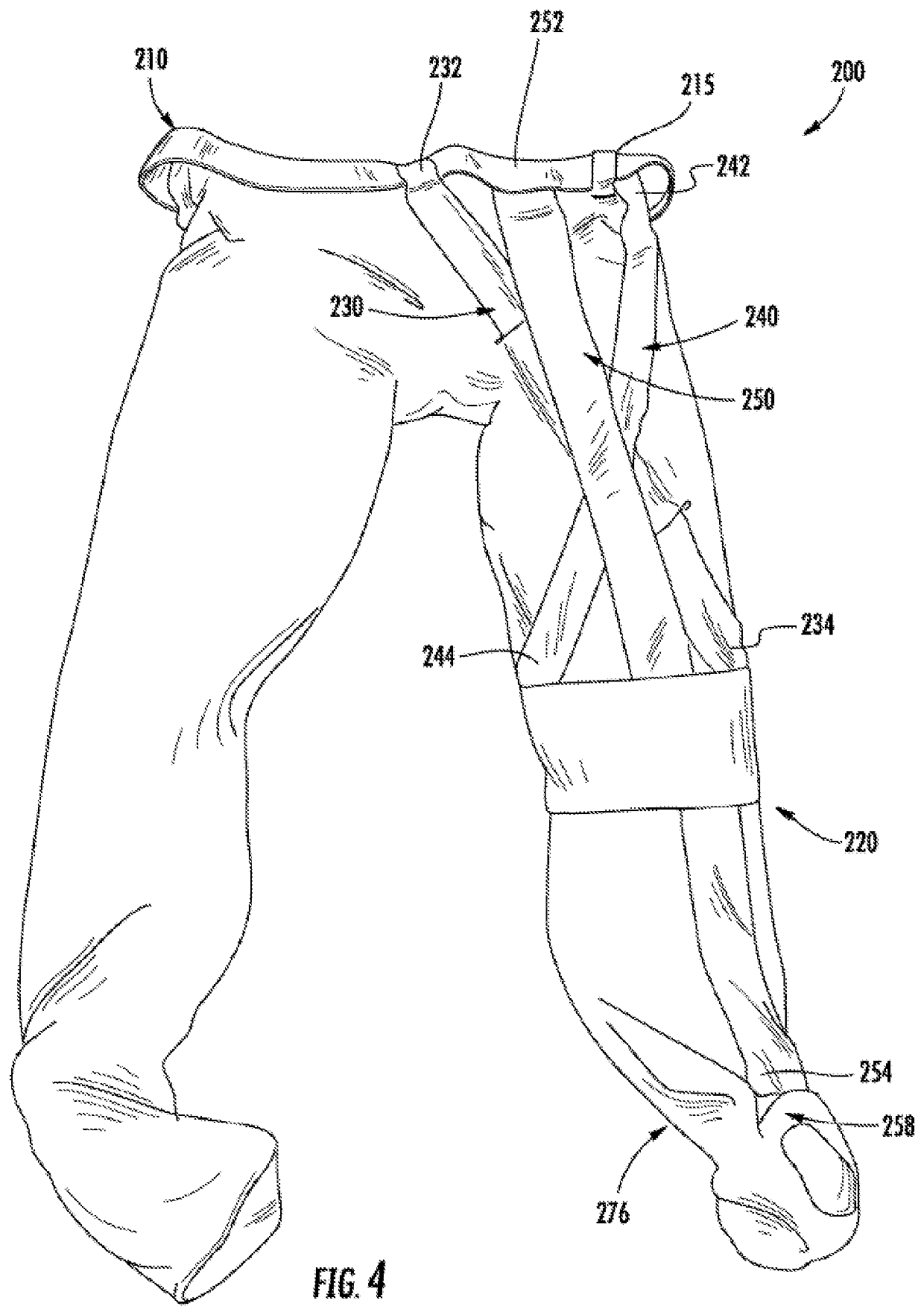Assistive device for hamstring injury rehabilitation
a technology for hamstring injuries and rehabilitation devices, applied in the field of hamstring injury rehabilitation, can solve the problem that the technique does not reduce the stress of the hamstring
- Summary
- Abstract
- Description
- Claims
- Application Information
AI Technical Summary
Benefits of technology
Problems solved by technology
Method used
Image
Examples
Embodiment Construction
[0026]Various implementations include an assistive hamstring device that includes a belt for being disposed around a waist and / or hips of a person, a knee sleeve for being disposed around a knee of the person, a first elastic strap having a first end portion and a second end portion, a second elastic strap having a first end portion and a second end portion, and a third elastic strap having a first end portion, a second end portion, and an intermediate portion between the end portions and spaced apart from at least the first end portion. The belt has a first dorsal belt portion for being disposed adjacent a sagittal plane on a dorsal side of the person, a side belt portion for being disposed adjacent a coronal plane of the person, and a second dorsal belt portion disposed between the first dorsal belt portion and the side belt portion, the second dorsal belt portion for being disposed adjacent the dorsal side of the person. The knee sleeve has a lateral knee portion for being dispos...
PUM
 Login to View More
Login to View More Abstract
Description
Claims
Application Information
 Login to View More
Login to View More - R&D
- Intellectual Property
- Life Sciences
- Materials
- Tech Scout
- Unparalleled Data Quality
- Higher Quality Content
- 60% Fewer Hallucinations
Browse by: Latest US Patents, China's latest patents, Technical Efficacy Thesaurus, Application Domain, Technology Topic, Popular Technical Reports.
© 2025 PatSnap. All rights reserved.Legal|Privacy policy|Modern Slavery Act Transparency Statement|Sitemap|About US| Contact US: help@patsnap.com



